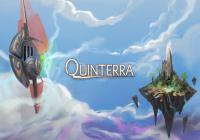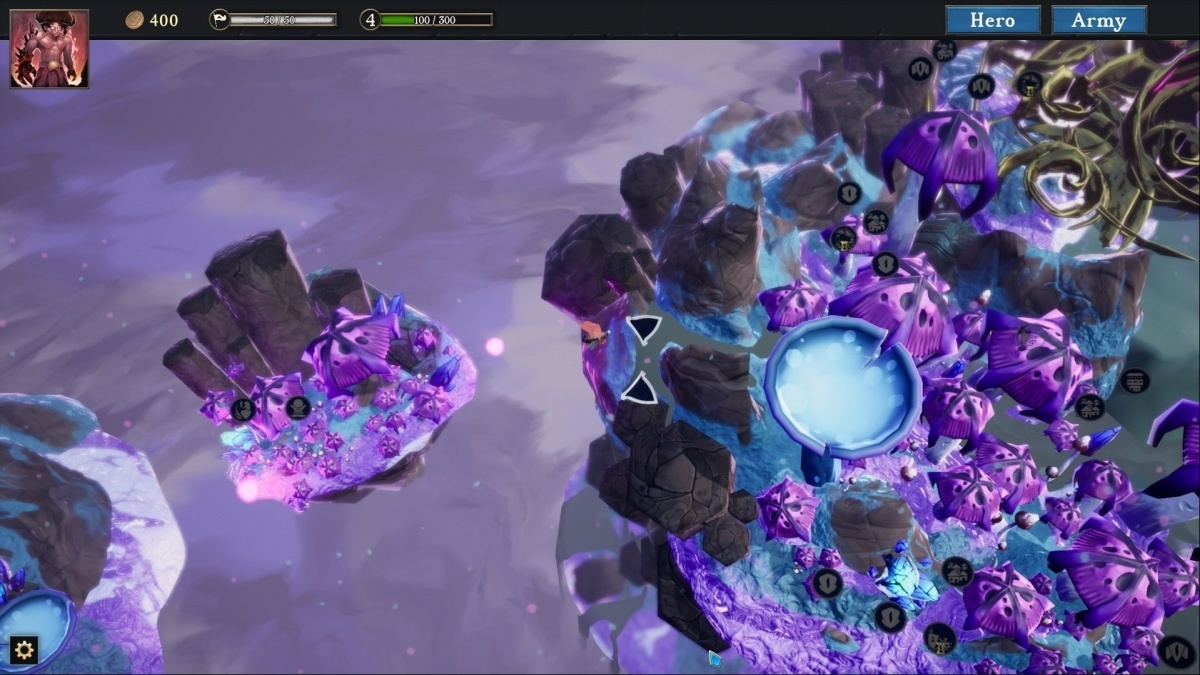Quinterra (PC) Preview
By Eric Ace  16.04.2021
16.04.2021

Developed and published by small indie developer Sidereal Studio, Quinterra is a tactical strategy game with rogue-like aspects that is currently in early access on Steam. Quinterra plays like a mix of Magic the Gathering with some light tactical action. As players complete battles, they slowly evolve their army through cards, reminiscent of a collectible card game, with an added twist of including buffs and equipment.
Checking out an early access game of Quinterra, Cubed3 sets out to see a new tactical, turn-based strategy game. Taking place on a shifting grid, players gather some simple resources, summon a couple of creatures that will fight, and engage in battle from there. The formula is simple, but there are some twists that add some needed depth, such as having items that can be equipped onto these summon cards.
The general flow is that on the player's turn, they pick a terrain on the map to remove from play, and it then gives a few elements such as fire or trees. These elements can then be used to 'prepare' various types of summon cards, which means having them ready to be summoned but not actually placed. Players have to manage two different types of resources, namely 'structure' and 'mana', which are used to either build static buildings, or moveable units. Assuming sufficient resources, the player can spend them to send these 'prepared' units directly into the battle field. From here, they either move, attack, or use a special move in their attempt to generally kill off the opposition.
Choosing from different races, players start with a basic army that can eventually be evolved and expanded for harder battles later. At the beginning however, units are largely very simplistic, with only a few hit points and dealing little damage. One cool thing is that, as the game goes on, these units can be modified by a single piece of equipment such as a shield for extra armour, or something for extra hit points. It allows different players to have the same card, yet still have them play out slightly differently on the field.

The flow is interesting, but at this point the balance is off-putting. The tutorial is way too long and complicated. Very early on, some of the enemies' units are crazy for how potent they are, especially for just starting the game. Furthermore, other aspects of damage or armour feel a little off, namely how stacking things like defence can make a unit easily invincible, or other units stacking out attack that allows to instantly kill anything. It makes a majority of the units seem worthless in comparison. The game itself is simplistic in general, so these stand out as particularly bad.
The idea itself could be good if a lot of these problems were addressed. If this was a final release there would be significant issues, but given the early access nature of this, many of these can be forgiven. Although the battles seem more like slam-fests of mashing units together, the whole idea of equipping units, levelling skills and attaching gems could really make for strategic gameplay if done right.

Final Thoughts
Still in early access, there are a lot of rough edges. There are some clear balance problems, pacing issues, and general confusion about what is happening. However, even with all these criticisms, there is actually an interesting core game under the hood. There needs to be some work done before it is recommended on release, however games that actually look for feedback like this may turn out to be a hidden gem.
Comments
Comments
Still in early access, there are a lot of rough edges. There are some clear balance problems, pacing issues, and general confusion about what is happening. However, even with all these criticisms, there is actually an interesting core game under the hood. There needs to be some work done before it is recommended on release, however games that actually look for feedback like this may turn out to be a hidden gem.
Comments are currently disabled

 Sign In
Sign In Game Details
Game Details
 Out now
Out now  Out now
Out now  Out now
Out now  Out now
Out now  Subscribe to this topic
Subscribe to this topic Features
Features





 Top
Top

